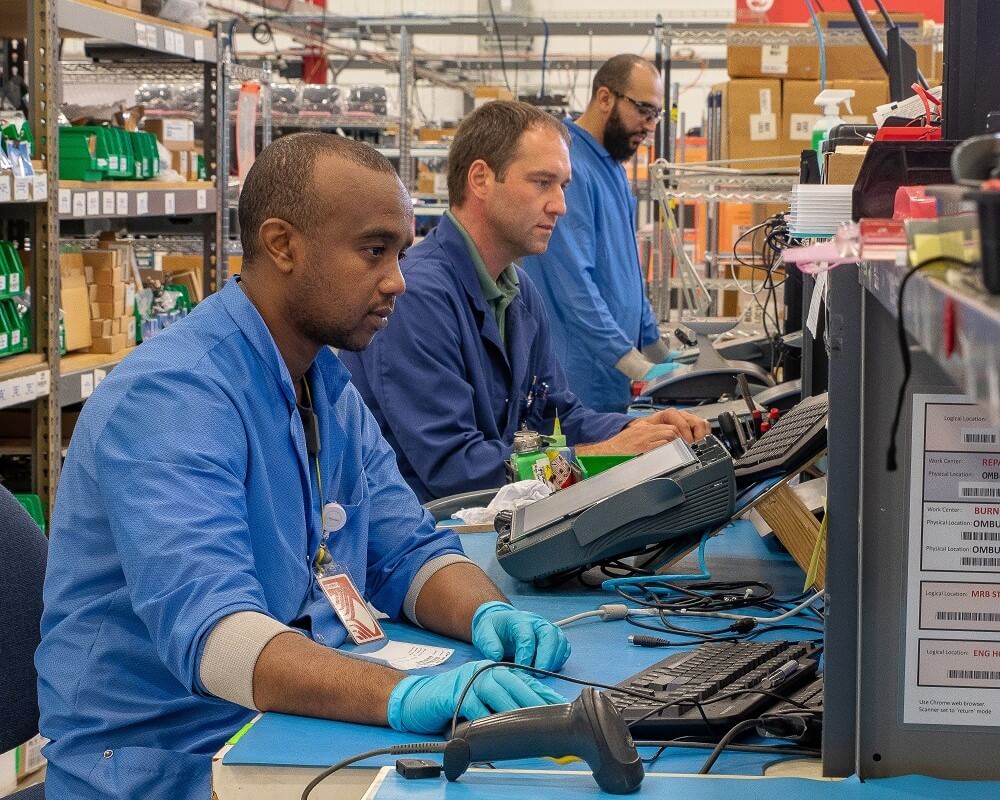It wasn’t long ago that when you heard the word “sustainability,” you may have just thought about separating your plastics and paper. But sustainability has become increasingly top of mind for consumers, governments and businesses around the globe, with the world awash in what the United Nations has called a "tsunami of e-waste." That's why e-waste management is a crucial component of several Sustainable Development Goals under the United Nations 2030 Agenda for Sustainable Development. With the increasing emphasis on sustainability and climate change, companies must reckon with the environmental impact of their information technology operations.
As more global citizens become environmental activists and grow more aware of the environmental and societal costs of waste, they expect the companies they work for, invest in, purchase from and partner with to adopt a similar mindset authentically. Research from Forrester found that empowered consumers seek brands that are committed to sustainability, with 68 percent saying they plan to increase their efforts to identify brands that reduce environmental impact. Another report found that 74 percent of global consumers are willing to pay more for environmentally friendly, sustainable packaging. That's why sustainable IT asset management has become increasingly important for businesses that want to have a positive environmental impact, maintain brand loyalty and remain successful in the long term — or, better yet, serve as a leader in the sustainable IT movement.
The Environmental and Societal Consequences of E-Waste
Although technology has improved our lives in immeasurable ways, its disposal has created an irreversible effect on our environment. In 2019, the world generated roughly 54 million metric tons of e-waste, which includes IT assets. That figure is expected to increase 30 percent by 2030, making e-waste the fastest-growing waste stream worldwide. Then, there’s more than 368 million metric tons of plastic produced every year — nearly seven times the amount of e-waste. A lot of this plastic is disposable packaging, but a good percentage of it is what’s used to produce all those electronic products. As original equipment manufacturers (OEMs) search for new markets and plan for new supply chain practices, e-waste has become a significant issue they cannot ignore.
For IT OEMs, sustainable IT asset management can be thought of in terms of the materials used to make products as well as the way those products make their way through the supply chain — particularly the reverse motion, which governs what happens to a product once a customer no longer wants it. That’s where establishing a closed-loop supply chain driven by a circular economy philosophy becomes a critical element of sustainable IT practices.
Adopting a Circular Economy Philosophy
Companies must include suppliers and vendors in their sustainability efforts, as consumers and regulators place responsibility on the recognizable brand names to implement environmentally conscious practices within their ecosystems.
"Organizations must consider the impact of their policies on their customers' customers throughout their operations," said Mathias von Bescherer, vice president of Global Repair and International Operations, Shyft Global Services. "Consumers don't care if the actual operations are performed internally or outsourced."
From the IT OEM perspective, sustainability encompasses the entire product lifecycle from the materials used to make products and how those products make their way through the supply chain to their end-of-life disposal. From the value-added reseller (VAR) perspective, the impact of operations, maintenance and repair services are also a factor in the organization's environmental footprint.
Granted, some e-waste is inevitable at this point, as the world will produce approximately 74 million metric tons of e-waste each year by 2030, according to E-waste Monitor, doubling in only 16 years. Much of that growth is due to higher consumption rates of electric and electronic equipment, short lifecycles and few options for repair. But much can be done in the IT space to address the issue and develop innovative solutions and new ways of doing business that are better for the environment.
Adopting a circular economy philosophy is one of the ways companies can reduce the impact of their IT infrastructure. The circular economy model looks beyond the traditional industrial model of “take-make-waste,” with the goal being to transform systems to eliminate waste and pollution and keep products and materials in use. From the IT perspective, electronic devices and related waste can be mitigated through reduction, reuse, repair and recycling in a closed-loop supply chain process that factors in the product’s end of life.
Transform IT Practices for Sustainability With a Closed-Loop Supply Chain
From smartphones to farm tractors, many consumers and governments are pushing to maintain the right to repair devices independently or through third parties. Repairing a device rather than disposing of it is usually the most cost-effective alternative and lessens the impact on the waste stream. It's a vital component of the circular economy model — “waste not, want not,” as the saying goes.
"It's clearly a growing trend to repair and reuse technology to extend the lifecycle. From a cost perspective, it can be more attractive as well if the processes are lean and the spare parts supply is managed well — not to mention the positive impact on the environment." von Bescherer said.
A closed-loop supply chain can greatly enhance IT manufacturing sustainability by putting in place sustainable practices that address what happens when IT equipment reaches end of life. Good supply chain practices include plans for the various stages of product reclamation, recycling, reuse and repair. Upgrade and repair paths influence a product’s longevity, directly impacting a company's sustainability position, and global repair services enable businesses to profitably recover, reuse and recycle products and parts instead of adding them to the growing problem of e-waste. But contending with a product’s end of life can be both complex and expensive, and understanding each country’s environmental regulations can be overwhelming.
“To reduce the significant expense of enacting sustainability practices in-house, many companies are relying on partners to help them drive their sustainability goals,” said von Bescherer. Outsourcing to sustainable IT asset management partners that have already developed circular economy and closed-loop supply chain processes can alleviate the necessity to develop such capabilities in-house. These global repair services partners should be seen as an extension of the leading brand organization, conveying credibility through the association.
Innovation Requires Leadership
While the sustainable IT challenges that lie ahead may be complex and expensive, there's room for innovation to address them. In the future, recycling capabilities will further develop to extract reusable materials like various metals and minerals. Vendors will reuse or remarket repaired components and devices, reducing the strain on the supply chain. Finding productive solutions for waste materials such as plastics, metals and chemicals will force the IT world to rethink its supply chains. The most sustainable component is the one that's never made in the first place. The second most sustainable path is one that can be recycled or reused in some fashion.
As the sustainable IT space innovates, updated manufacturing processes and comprehensive global repair services are essential practices to mitigate the current level of environmental impact. Partnering with a global logistics provider of responsible, secure repair services offers OEMs and VARs the capability to address sustainable IT challenges without making significant investments in infrastructure, headcount and other overhead operational costs. Finding the opportunity across the supply chain can make all the difference between contributing to the sustainability movement versus holding it back.
Learn how to identify the key attributes of a high-quality global logistics and repair services partner who can help you navigate rapid industry change and harness the power of repair strategy transformation in the whitepaper, Your Future-Proof Repair Strategy.
About the Author

Mathias von Bescherer joined Tech Data in 2017 and serves as the Vice President of Global Repair and International Operations. With more than 20 years’ experience in leadership positions with renowned global IT corporations in Europe, Asia and North America, Mathias brings a strong international business acumen and deep understanding of operational and cultural requirements associated with conducting business on a global scale.





